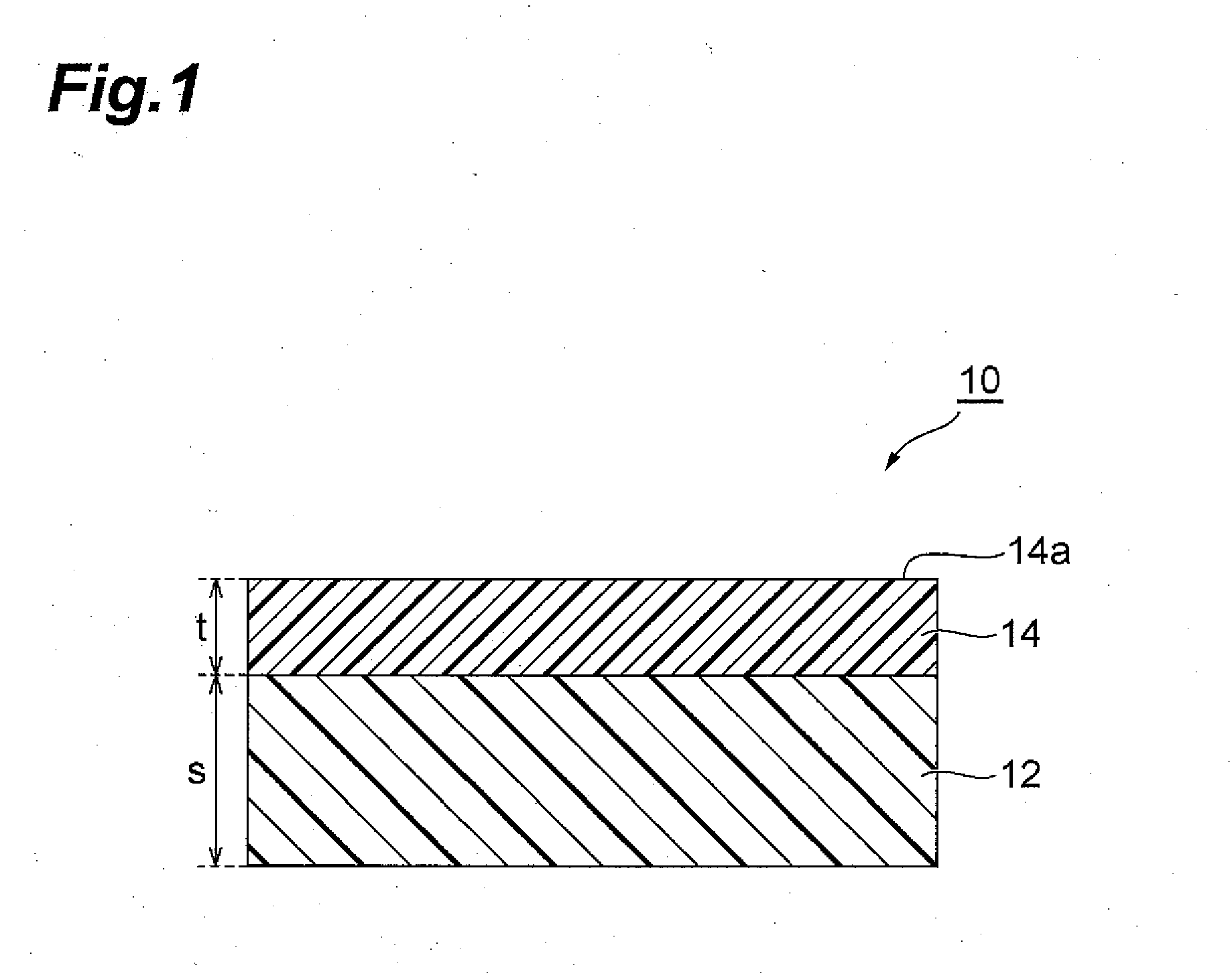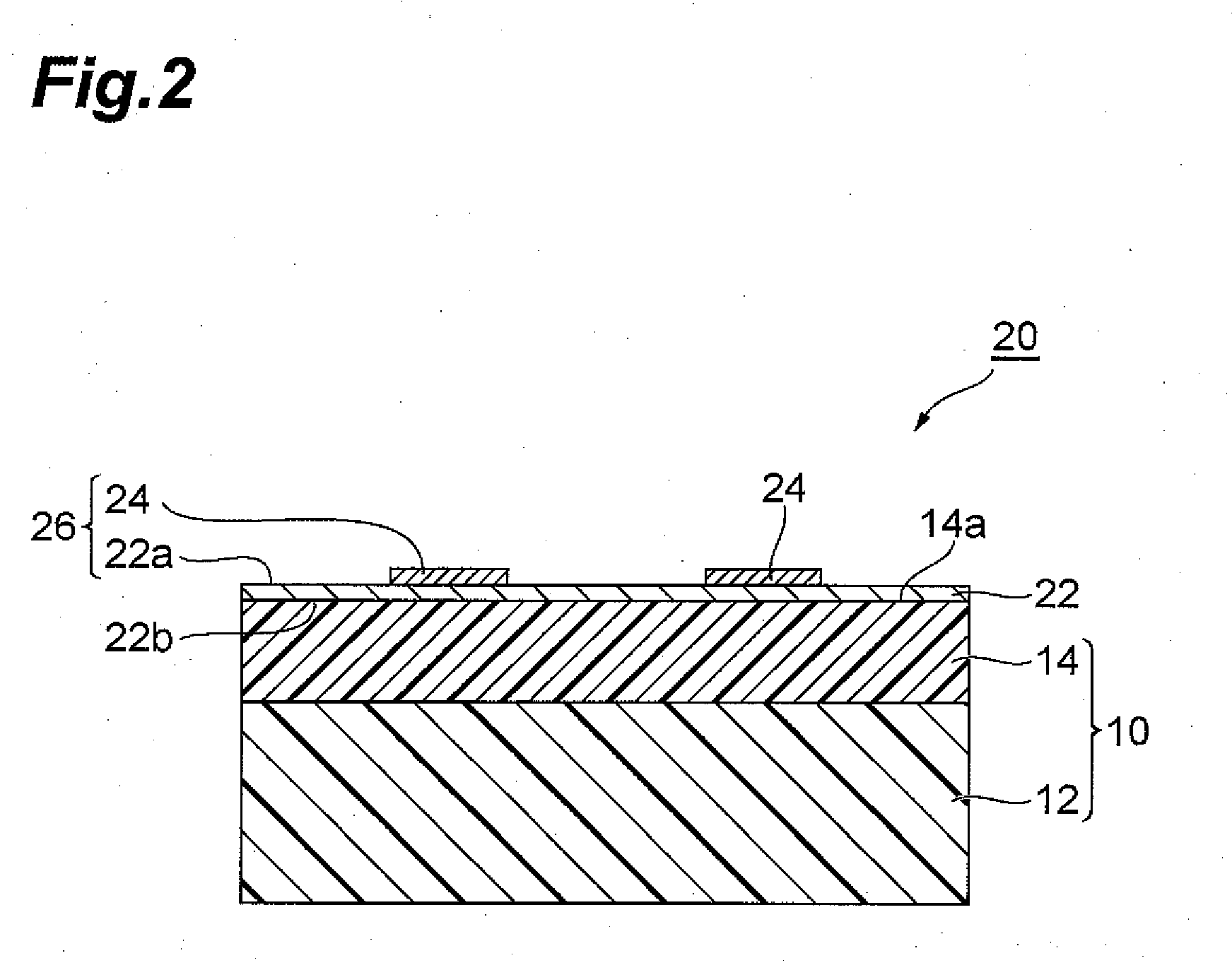Release film, ceramic part sheet and process for their production, and process for production of ceramic part
a technology of ceramic parts and release films, applied in the field of release films and ceramic parts, can solve the problems of undesirable reduction of the mechanical strength of the base film, poor coating, and resistance to paste, and achieve the effects of high yield, easy production, and excellent release properties and coating
- Summary
- Abstract
- Description
- Claims
- Application Information
AI Technical Summary
Benefits of technology
Problems solved by technology
Method used
Image
Examples
example 1
[0104]There were prepared as starting materials an acrylate monomer represented by formula (5) below (specific gravity: 0.99), modified silicone oil modified with acryloyl groups at both ends, represented by formula (6) below (specific gravity: 0.98), and 1-hydroxy-cyclohexyl-phenyl-ketone as a reaction initiator. Upon stirring 100 parts by mass of the acrylate monomer of formula (5) and 5 parts by mass of the modified silicone oil represented by formula (6) in a beaker to prepare a mixture, the mixture became opaque and separated. This confirmed that the acrylate monomer and modified silicone oil were immiscible. Addition of 125 parts by mass of toluene to the mixture rendered it transparent. A release film was then formed in the manner described below.
[0105]After placing 0.0103 part by mass of the modified silicone oil of formula (6) above and 150 parts by mass of toluene with respect to 100 parts by mass of the acrylate monomer of formula (5) above in a metal container, the mixtu...
examples 2-7
[0113]A release film was formed and evaluated in the same manner as Example 1, except that the mixing proportion of the modified silicone oil was changed as shown in Table 1. The evaluation results are shown in Table 1.
example 8
[0114]A release film was formed and evaluated in the same manner as Example 3, except that a vinyl group-modified silicone oil represented by the following formula (7) (specific gravity: 0.98) was used instead of the acryloyl group-modified silicone oil (specific gravity: 0.98). The evaluation results are shown in Table 1.
PUM
| Property | Measurement | Unit |
|---|---|---|
| thickness | aaaaa | aaaaa |
| smoothness | aaaaa | aaaaa |
| peak height | aaaaa | aaaaa |
Abstract
Description
Claims
Application Information
 Login to View More
Login to View More - R&D
- Intellectual Property
- Life Sciences
- Materials
- Tech Scout
- Unparalleled Data Quality
- Higher Quality Content
- 60% Fewer Hallucinations
Browse by: Latest US Patents, China's latest patents, Technical Efficacy Thesaurus, Application Domain, Technology Topic, Popular Technical Reports.
© 2025 PatSnap. All rights reserved.Legal|Privacy policy|Modern Slavery Act Transparency Statement|Sitemap|About US| Contact US: help@patsnap.com



